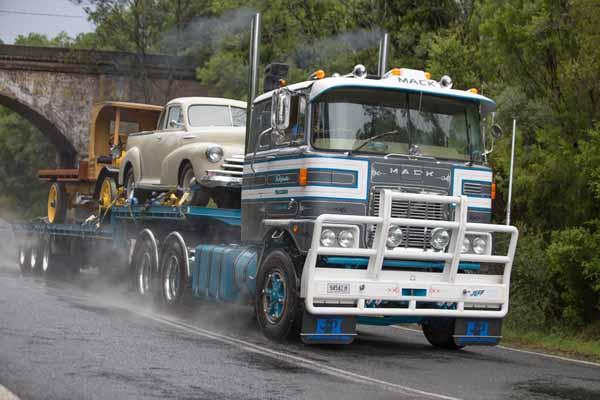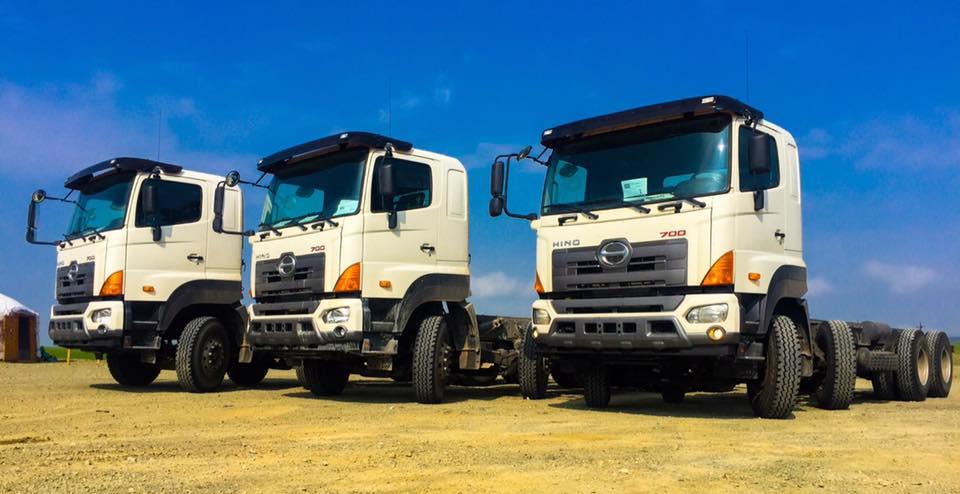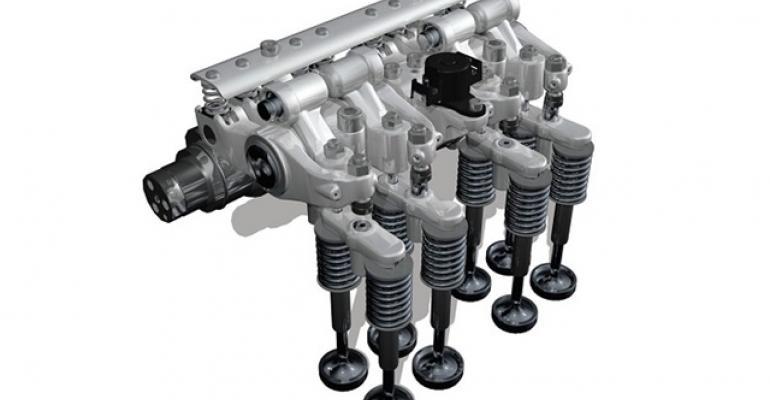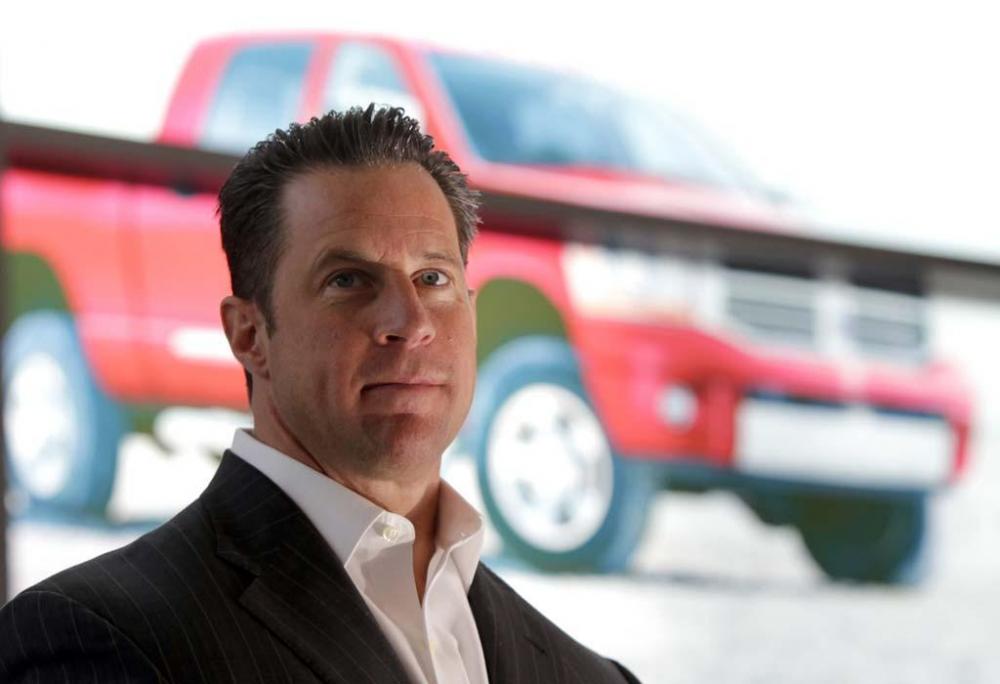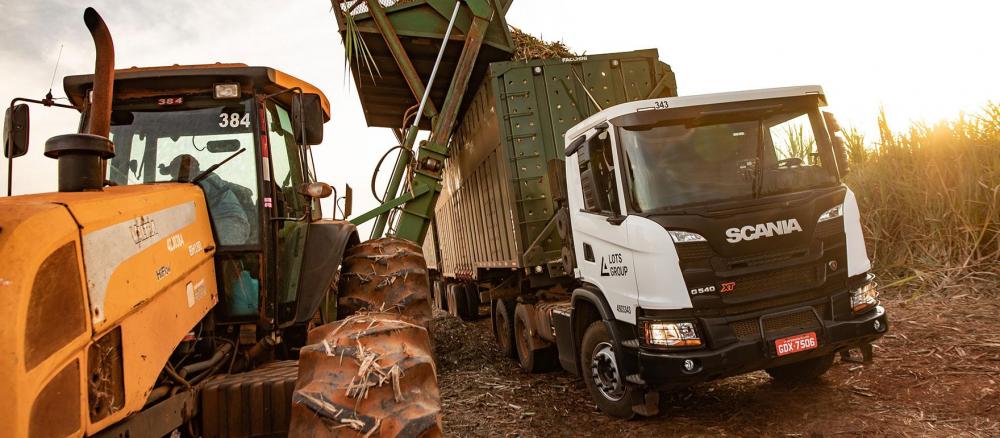
kscarbel2
Moderator-
Posts
18,544 -
Joined
-
Days Won
112
Content Type
Profiles
Forums
Gallery
Events
Blogs
BMT Wiki
Collections
Store
Everything posted by kscarbel2
-
Power Torque Magazine / June 2019 As 285 historic vehicles assembled at Camden, south-west of Sydney, for the biennial “Haulin’ the Hume” run on Saturday March 30, a wet and misty start to the day did little to dampen the spirits of eager participants. The inaugural run took place in 2011, covering the 240km run from Camden to Yass following (as much as possible) the original Hume Highway route. The event commemorates the time and effort taken by drivers the complete the Sydney-to-Melbourne trip. Back in the early days of the highway, the time taken to travel between the two major cities was measured in days, rather than hours as it is now. The torque-sapping hills of the Old Hume Highway and the numerous villages and towns through which the trucks rumbled every night would have been formative in the early driving days of the somewhat older band of drivers involved in the modern-day re-enactment run. Recalling times when calls over the CB radio of “southbound, hole in the wall” or “green light northbound” sounded, the memories were still vivid in the minds of many of the participants as the procession of trucks, trailers, buses and cars meandered through Picton to the delight of many spectators after traversing the famous “Razorback Range”. Some of those villages, such as Picton, Yanderra, Yerrinbool, Berrima, Gunning and many others long since bypassed, now provide a sleepy existence for their residents. Many may never have been woken in the night by the cackle of Jake Brakes or the dulcet tones of a high-revving, two-stroke “Jimmy” piercing the night silence. This was once the norm, especially with those running express freight on what was undoubtedly one of the busiest freight routes in the country. Every two years on Haulin’ The Hume day, Saturday sleep-ins in these hamlets are interrupted by hundreds of historic trucks and buses exceeding acceptable modern-day decibel levels and emitting enough exhaust soot to discourage the hanging of washing on lines. Put on by the Western Sydney Historic Vehicle Club, the event was conceived by Bruce Gunter whilst on a run to Alice Springs with his father, Geoff, in a Commer Knocker they had restored. During that trip, Geoff suggested a Hume run might be a good thing to do. Bruce says the fact that his Dad fell ill on that Alice Springs run formed a need to get the idea off the ground. The rest, as they say, is history, with the event gaining in popularity on each subsequent occasion, building from the original 143 entries in 2011. After seeing the wide enthusiasm for the event and an ever-growing number of entrants, Bruce saw the opportunity to cast the transport industry in a good light and also raise money for a charity close to his heart, Aspect. Aspect is Australia’s largest service provider for people on the Autism spectrum, as is the case for Bruce’s son. Monies are raised from vehicle entry fees, cash donations and from sponsors, such as Kenworth, Mack, Pace Farms and Park Lea Sand and Soil. After the rain had cleared, the historic convoy assembled at the Goulburn Recreation Centre grounds for a very chilly intermission and lunch, organised by Bryan Webb. This provided spectators and drivers alike the opportunity to take a closer look at the diverse range of trucks taking part in the event. The lunch stop also afforded an opportunity to speak with Bruce Gunter, the event founder. These days actively involved as a consultant for companies conforming to compliance legislation for the transport industry, Bruce says the Haulin’ The Hume event not only casts the industry in a positive light but also that the preparation of the trucks − together with the restoration work involved in getting them ready for this and similar events and rallies − goes a long way towards combating mental health issues such as depression. The camaraderie and common goal of this event fosters a unique bond of shared interest whilst paying homage to the men, women and trucks that make up Australia’s transport heritage. After lunch, the procession of Internationals, Kenworths, Macks, Bedfords, Peterbilts, Dodges, Mercedes, Fodens, Commers and a whole bunch of makes I’m sure I have forgotten, made their way back to the Hume Highway. The route then following the Cullerin Ranges through Gunning and Breadalbane to terminate at Yass for a dinner and fundraising auction. There’s no doubt it’s nice to sit in a modern truck with its air-conditioning, cruise control, air-suspended seating, heater and the knowledge the service brakes will actually provide reassuring speed retardation, preventing a bead of sweat forming on your brow at the sight of a “steep descent” sign. But it is equally gratifying to see Australia’s transport heritage cared for in the capable and loving hands of proud owners, still “Makin’ a Mile “even if they are not getting paid for it. Not in their wildest dreams could these drivers of yesteryear have imagined the kind of creature comforts afforded to the current-day truckie, and they must be applauded for operating what could, at best, be described as rudimentary equipment. However, keeping things in perspective, the trucks of 2060 and beyond will most likely bear little resemblance to the 2018 model I drive today. . .
-
New Zealand Trucking / June 2019 Hino Motors, Ltd. has opened an authorised sales and service centre in Ulan Bator, working through its partner in Mongolia, Khishig Arvin. Hino will be making a full-blown entry into the Mongolian market. As part of the company's efforts to strengthen its business foundations for offering value to its customers and society under the Challenge2025 programme, it aims to increase its global unit sales and strengthen its ‘Total Support’ operations to support its customers. Against a backdrop of steady economic growth, the demand for commercial vehicles in Mongolia is growing. To cater to the needs of Hino’s customers in the country, it has set up an authorised sales and service centre with cooperation from the Sumitomo Corporation. Hino will start off by selling heavy-duty trucks and offer best-fit products that match customers’ needs. It will also build the foundations of spare parts supply and service systems to help maximise vehicle up-time. Hino is also looking to offer support services aimed at maintaining vehicles, including on-site servicing at mining sites. .
-
-
How Paccar can come across so well in Oz, but so poorly in the states, is truly puzzling. Must be two different Paccar companies.
-
I would steer clear of Nissan. Japan Inc has a nationalistic agenda. Saikawa would have made a fine Imperial Army officer.
-
. . . .
-
Neil Abt, Fleet Owner / June 4, 2019 Jacobs Vehicle Systems, best known for its “Jake” engine compression brake, is prepping a demonstration truck that will travel the United States this year to allow customers to experience new technologies that can meet tougher emissions regulations while increasing fuel economy. Robb Janak, Jacobs’ director of new technology, said the 58-year-old company has spent much of this decade “repositioning” itself to provide a greater range of transportation solutions. This comes as the company begins rolling out the updated High Power Density engine brake that can offer drivers twice the braking power as the current brake, and provide improved braking capabilities at a lower rpm range. Besides the brake, the demo truck will also feature Active Decompression technology to aid in start-stop applications. The technology is designed to reduce vibrations when the engine is turned off during traffic congestion and in frequent idle situations. It is automatically activated by the engine control unit whenever the engine shuts down or starts up, and works by keeping the engine valves open and the cylinders decompressed. Jacobs said the system also improves start-ups in cold temperatures by enabling the engine to reach its critical compression ignition speeds. Another technology being development but not planned for this year's demo truck is the cylinder deactivation (CDA) system, which cuts emissions by achieving higher exhaust temperatures in the operating cylinders. As a result, large engines are able to have the fuel economy of smaller engines. At the lowest engine loads and with three of six cylinders deactivated, fuel consumption improves by up to 20%. Janak said CDA development is particularly important, because it can offer both lower emissions and higher fuel economy, which were earlier considered to be mutually exclusive. Jacobs is also introducing a two-step variable valve actuation system designed to enhance performance across an engine’s operating range. In a separate announcement earlier in May, Jacobs announced its engine brake model 5783A is now standard equipment on the International A26 engine. Jacobs has supplied a compression release engine brake for International Truck’s 13-liter engine since 2009. The 5783A model comes factory installed on International LT series, International RH series regional haul vehicles, and International HV and HX series vehicles. “We are excited to be a standard feature on the International A26 engine, complementing their technologies for the on-highway, severe duty, and vocational segments,” Steve Ernest, vice president of engineering and business development for Jacobs, said in a statement. Also in May, Jacobs was selected as a recipient of the John Deere Innovation Award for 2018. The award is presented to suppliers who have demonstrated innovation in a product or service they provide to John Deere. .
-
Fiat Chrysler withdraws Renault merger offer Bloomberg & Reuters / June 5, 2019 PARIS -- Fiat Chrysler withdrew a $35 billion merger offer for France's Renault, abruptly calling off what would have been a landmark deal to create the world's third-biggest automaker. Renault directors failed to reach a verdict on FCA's May 27 merger proposal at a board meeting that ran late Wednesday, the company said. The board was "unable to take a decision due to the request expressed by the representatives of the French state to postpone the vote to a later meeting," Renault said in a statement. Fiat Chrysler pulled the merger offer for Renault after the French automaker’s Japanese partner, Nissan Motor Co., declined to support the deal, The Wall Street Journal reported late Wednesday, citing people familiar with the matter. Nissan’s two representatives on Renault’s board were withholding support as other board members prepared to vote in favor of the $35 billion merger, the paper said. The opposition from Nissan representatives raised doubts about the Japanese automaker's commitment to preserving the alliance if the merger were to proceed, the paper said. "FCA remains firmly convinced of the compelling, transformational rationale of a proposal that has been widely appreciated since it was submitted, the structure and terms of which were carefully balanced to deliver substantial benefits to all parties," the company said in a statement. "However it has become clear that the political conditions in France do not currently exist for such a combination to proceed successfully." The French government, a major Renault shareholder, said Wednesday it wouldn’t approve Fiat Chrysler’s merger proposal without Nissan’s guarantee that Renault’s alliance with Nissan would survive. The French government asked to delay a vote on the merger, prompting Fiat Chrysler to withdraw its merger proposal, The Wall Street Journal said, citing people close to the matter. France was making progress toward a deal that would meet its demands, most of which were granted by Fiat, according to a French official who asked not to be named. However, French officials wanted more time to secure other requests, including that Nissan come on board before a combination move forward. More time was needed to reassure the Japanese side and explain the deal, a source told Bloomberg, adding the French government was surprised that Fiat suddenly withdrew its offer. On Monday, Nissan CEO Hiroto Saikawa said that the proposed merger, if realized, would significantly alter the structure of Renault. “This would require a fundamental review of the existing relationship between Nissan and Renault,” Saikawa said. FCA had earlier reached a tentative agreement with France on the terms of the proposed merger with Renault, two sources told Reuters. French concerns The French state, which owns 15 percent of Renault, had been seeking more influence over the merged company, firmer job guarantees and improved terms for Renault shareholders in return for blessing the $35 billion tie-up. Renault, FCA and the French government all declined to comment earlier on the ongoing board discussions. Analysts had warned of complications with the deal, including Renault's existing alliance with Nissan, the French state's role as Renault's largest shareholder and potential opposition from politicians and workers to any cutbacks. FCA has been locked in talks with Renault and the French state over its bid to create the world's third-biggest carmaker. France had broadly welcomed the deal, on condition it guarantees Renault's domestic blue-collar jobs and plants. Leadership questions The collapse of his proposal to create the world’s third-largest automaker marks a significant retreat for FCA Chairman John Elkann, who leads the company’s founding Agnelli family. After discussions with Renault’s cross-town rival Groupe PSA, Elkann opted for the riskier path, proceeding with an offer for Renault despite the complications of the government’s role and its strained relationship with alliance partner Nissan. The breakdown of talks on a night when a deal appeared to be in hand also leaves Renault Chairman Jean-Dominique Senard in a difficult position -- having sought and failed to bring the French carmaker’s various constituencies into agreement. In addition to the demands from the French state, unions were worried about jobs and Nissan felt burned by the previous regime under deposed alliance Chairman Carlos Ghosn. Renault’s board was poised to approve the deal, with Nissan representatives abstaining, people familiar with the matter told Bloomberg. But France’s representatives asked for more time after officials made clear they wanted to discuss with Japanese authorities before making a decision, they said. Finance minister Bruno Le Maire plans a trip to Japan soon, one of the people told Bloomberg. More time was needed to reassure the Japanese side and explain the deal, a French government official said, asking not to be identified to comply with ground rules. The person added that the government found surprising Fiat’s rushed move to withdraw its offer. A spokesman for the minister didn’t return requests for comment. Criticism of Fiat’s May 27 proposal has gathered steam in recent days. France asked for assurances on jobs, board representation and the role of Senard, 66, who would be CEO of the combined company. Some investors have also voiced doubts. Paris-based activist investment manager CIAM, in a letter to Renault’s board, said the merger with Fiat significantly undervalues Renault and that a 2.5 billion-euro ($2.8 billion) dividend set to go to Fiat Chrysler shareholders should instead be paid to the French company.
-
Bigland's a good guy. And remember it was Bigland who wanted to bring back Dodge heavy trucks.
-
Sales chief Bigland files whistleblower suit against FCA Vince Bond Jr. & Michael Wayland, Automotive News / June 5, 2019 Reid Bigland, head of U.S. sales for Fiat Chrysler Automobiles (FCA), filed a whistleblower lawsuit against the automaker Wednesday, claiming he has been a scapegoat for the company's sales practices being probed by federal officials. In the suit, Bigland claims FCA has retaliated against him for cooperating with an Securities and Exchange Commission (SEC) investigation and slashed his pay by about 90 percent, starting in March. FCA executives plan to use his withheld compensation to pay any penalties or settlements reached with the SEC, according to the lawsuit filed in Michigan's Oakland County Circuit Court. The automaker's actions will cost Bigland about $1.8 million, the lawsuit said. Bigland, according to the suit, says he has cooperated with the SEC investigation, testifying "at length" about Fiat Chrysler's U.S. sales reporting practices, which he said long predated his appointment as U.S. sales chief in 2011, according to the lawsuit. "In late 2018, presumably as a way to wrap up their investigation with some result, the SEC suggested to plaintiff that he admit to some wrongdoing as to defendants' monthly sales reporting," Deborah Gordon, Bigland's lawyer, wrote in the lawsuit. "The SEC also suggested a resolution involving some penalty to FCA. Because (Bigland) had not engaged in any wrongdoing, and there was no wrongdoing, he declined to do so." In July 2016, FCA voluntarily changed the way it reports U.S. monthly sales and restated results for the previous five years to reflect the new methodology. The lawsuit says Bigland was excluded from the process of devising a new monthly sales reporting methodology, and was only advised that FCA was considering different methods to adopt. The SEC has been investigating the company's sales reporting practices before the company changed them. Fiat Chrysler said long-term incentive payouts are made at the discretion of a board committee. Bigland's "eligibility for incentive compensation — like that of all corporate officers — is subject to a determination by the board of directors' compensation committee that he has satisfied the applicable company and personal performance conditions," FCA said in a statement. "Mr. Bigland's eligibility for his award remains subject to that determination and completion of a board-level evaluation of issues that are the subject to governmental investigations (as previously disclosed by FCA) in which FCA continues to cooperate." The company said further it would be "inappropriate to comment on ongoing litigation or internal compensation processes." According to Gordon, Bigland remains employed by the company. Bigland’s participation in the SEC investigation, including a “white paper” he wrote detailing his knowledge of the automaker’s sales reporting methodology, has sparked retaliation from the company, Gordon said. She described FCA’s decision to withhold a portion of his compensation as an “unusual situation” because of Bigland’s “excellent” performance that the lawsuit aims to reconcile. “We’re hoping my client will receive the compensation he has earned and then some,” Gordon said Wednesday. “It appears my client is being retaliated against.” .
-
Reductions in Volvo factory - weak demand in Europe
kscarbel2 replied to kscarbel2's topic in Trucking News
The Volvo - Shandong Lingong joint venture is as unsuccessful as the one it has with Dongfeng. http://www.sdlg.cn/ -
-
In China, car dealers have the right to sell vehicles for whatever price they want......as they should in a free market.
-
Chinese regulators slap Ford's joint venture with $23.6 million fine CNN Business / June 5, 2019 Hong Kong - Chinese regulators have fined Ford's main joint venture in the country for violating antitrust laws. China's State Administration for Market Regulation slapped Changan Ford with a 162.8 million yuan ($23.6 million) fine for setting minimum resale prices on its cars in the city of Chongqing. The fine amounts to 4% of the company's sales in Chongqing last year. Ford owns 50% of the joint venture, with the rest controlled by its local partner, state-owned carmaker Changan Automobile. Changan Ford's actions deprived downstream dealers of pricing autonomy, restricted competition and damaged the legitimate interests of consumers, the regulator said. Ford said it "respects" the market regulator's decision. "Changan Ford has taken corrective action in its regional sales management together with its dealers," a Ford spokesperson said. "As an ethical company, Ford is committed to complying with local laws and regulations wherever we do business," the spokesperson added. The penalty also comes as Ford is looking to make up lost ground in China. Ford's sales in the country plunged by nearly 40% in 2018 compared to the previous year. The carmaker announced in April that it plans to launch more than 30 new Ford and Lincoln vehicles in China over the next three years as it tries to reverse a decline in sales in the world's biggest auto market. China is Ford's second biggest market after the United States.
-
Reductions in Volvo factory - weak demand in Europe
kscarbel2 replied to kscarbel2's topic in Trucking News
The Volvo and Mack brands ranks at the bottom in North America, at 5th and 6th respectively, with low production volumes, and now the bottom is falling out in Volvo's Swedish production. UD is a money loser, Volvo never having turned it around but rather made it worse. Volvo Construction remains a question mark after losing its shirt in China and key shareholders would like to sell it. Volvo never mentions the Dongfeng joint venture because it never panned out for them. Renault Trucks is the only shining star but it can't carry the group. -
Dagens Industri / June 5, 2019 The Volvo plant in Tuve reduces production rate after the holiday period. Around 150 temporary and staffing employees getting laid off. Production will decrease from 30 to just over 16 trucks on the evening shift. The reason is said to be the demand trend in Europe. "We adapt the production rate to the order intake that exists," says Claes Eliasson, press officer at Volvo, according to Göteborgs-Posten . In connection with this year's first quarterly report, Volvo reported a clearly lower order intake for trucks than expected. The focus was then directed towards the North American market, but also the European order intake fell, down 17 percent compared with the first quarter last year. However, the vehicle manufacturer repeated the full-year forecast for the total market for heavy trucks. "When we look at normal indicators such as the price of used trucks, the utilization rate of connected vehicles, we still see a high level of activity and that is also why we are repeating our market forecast for 2019, which is somewhat lower than in 2018, but still on a good level. Order intake trending around 300,000 now, ”said CEO Martin Lundstedt then to Di. Earlier this week , RBC highlighted Volvo's heavy exposure to Europe as a reason to wait for purchases in an analysis where the recommendation was set to sector perform. The Canadian major bank was also skeptical of developments in the North American market.
-
Dagens Industri / June 5, 2019 According to preliminary figure, order intake for heavy trucks in North America amounted to 10,800 units in May. This is a decline of 27 per cent compared with April and a full 70 per cent on an annual basis. The figure indicates the "worst net feed development since July 2016 for heavy trucks". A weak freight market and continued high order backlogs are behind the weak order intake. As recently as Tuesday , RBC Capital flagged that both the European and the North American market for heavy trucks will probably fall this year in connection with the Canadian bank launching the monitoring of Volvo with the recommendation sector perform. In connection with this year's first quarterly report, which was released at the end of April, Volvo reported a substantial decrease in the North American order intake, minus 77 per cent. However, CEO Martin Lundstedt toned down the figure. "The order intake in relation to deliveries was extremely positive for a long time and as we have communicated earlier, we continuously look over the quality of our order book in North America to ensure that we are not on poor orders," he said to Di.
-
Scania Group Press Release / May 23, 2019 Lots Group, an independent company within Scania, has been awarded a major contract for the transport of sugar cane in Brazil. Operating its own dedicated fleet of Scania G 540s 6×4 trucks, Lots will annually transport 1.5 million tons of sugar cane on behalf of Cocal, a leading Brazilian producer of sugar, ethanol and bioenergy. Cocal manages over 130,000 hectares of sugar cane and operates a fleet of approximately 300 heavy trucks to manage logistics from its fields to refineries. The outsourced transport arrangement to Lots is a first for Cocal as the company seeks new ways of improving its supply chain effectiveness. “This is a highly interesting project for us to further improve our operations,” says Renan Ludwig Paiva, Agriculture Manager at Cocal. “Transport constitutes a major expense in our operation and we need to look at every aspect to make it more efficient.” Lots will set up its control tower solution to manage the optimisation of production flow and dispatching. While Lots manages its own fleet and drivers, the transport will be carried out in close collaboration with Cocal’s other operations to ensure smooth and effective delivery. The contract represents a breakthrough into the agricultural sector for Lots and builds upon its existing operations in Asia, Europe and Latin America. .
-
Renault Trucks Press Release / May 29, 2019 .
BigMackTrucks.com
BigMackTrucks.com is a support forum for antique, classic and modern Mack Trucks! The forum is owned and maintained by Watt's Truck Center, Inc. an independent, full service Mack dealer. The forums are not affiliated with Mack Trucks, Inc.
Our Vendors and Advertisers
Thank you for your support!


